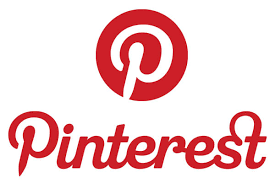Podcast 2: 5 Proven Strategies to Make Pinterest Incredibly Profitable for Your Business

Pinterest has evolved far beyond a simple visual discovery platform, transforming into a powerful revenue-generating engine for businesses worldwide. In this comprehensive discussion from Podcast 2, we explore actionable strategies that can turn your Pinterest presence into a profitable venture, whether you’re an entrepreneur, content creator, or established business looking to expand your digital reach and monetization opportunities.
The platform’s unique algorithm and user behavior patterns create unprecedented opportunities for businesses to generate substantial income through strategic content creation, affiliate marketing, product promotion, and audience building. Understanding how to leverage Pinterest’s visual search capabilities and shopping features can dramatically increase your revenue streams while building a sustainable online presence that continues generating profits long after your initial investment.
Understanding Pinterest’s Revenue Generation Potential
Pinterest operates differently from other social media platforms, functioning more like a visual search engine where users actively seek solutions, products, and inspiration. This intent-driven behavior creates a highly engaged audience that’s more likely to convert into paying customers when presented with relevant offerings and strategic calls-to-action.
Laura Chen, Digital Marketing Strategist: “The key to Pinterest profitability lies in understanding user intent and creating content that aligns with what people are actively searching for. Unlike passive social media consumption, Pinterest users come with purchase intent, making them incredibly valuable for businesses focused on conversion optimization.”
Michael Rodriguez, E-commerce Consultant: “Pinterest’s shopping features have revolutionized how businesses can monetize their visual content. Product pins, shopping ads, and verified merchant programs create multiple touchpoints for revenue generation, allowing businesses to capture users at different stages of the purchasing funnel and maximize conversion opportunities.”
Laura Chen: “Podcast 2 Content strategy on Pinterest requires a long-term perspective because pins have an extended lifespan compared to posts on other platforms. A well-optimized pin can continue driving traffic and generating sales for months or even years after publication, creating compound returns on your content investment.”
Michael Rodriguez: “Seasonal planning and trend forecasting are crucial for Pinterest success. The platform’s users often plan purchases months in advance, particularly for holidays, weddings, and home improvement projects. Understanding these patterns allows businesses to create content that captures early-stage buyers and nurtures them through extended sales cycles.”
Advanced Podcast 2 Monetization Techniques and Implementation
Laura Chen: “Affiliate marketing on Pinterest requires strategic disclosure and authentic recommendations that provide genuine value to users. The most successful affiliate marketers create comprehensive guides, tutorials, and inspiration boards that naturally incorporate product recommendations without appearing overly promotional or salesy.”
Michael Rodriguez: “Rich Pins technology allows businesses to provide additional context and information directly within their pins, including real-time pricing, availability, and product details. This enhanced functionality significantly improves conversion rates by reducing friction in the purchase process and providing users with immediate access to relevant information.”
Laura Chen: “Email list building through Pinterest involves creating valuable lead magnets and opt-in incentives that appeal to your target audience’s interests and pain points. Free templates, guides, checklists, and exclusive content can effectively capture email addresses and build a valuable asset for long-term revenue generation.”
Michael Rodriguez: “Podcast 2 Pinterest Analytics provides invaluable insights into audience behavior, content performance, and revenue attribution that can inform strategic decisions and optimization efforts. Understanding which pins drive the most traffic, engagement, and conversions allows businesses to replicate successful strategies and eliminate underperforming approaches.”
Laura Chen: “Collaboration with other creators and brands through group boards, cross-promotion, and partnership campaigns can exponentially increase your reach and revenue potential. Strategic partnerships allow businesses to tap into new audiences while sharing resources and expertise for mutual benefit.”
Scaling Your Pinterest Revenue and Long-Term Growth
Michael Rodriguez: “Podcast 2 Automation tools and scheduling platforms can significantly increase your Pinterest productivity and consistency without sacrificing content quality or engagement rates. However, maintaining authentic interaction and community engagement remains essential for sustainable growth and platform algorithm favor.”
Laura Chen: “Pinterest SEO optimization involves keyword research, strategic hashtag usage, and compelling pin descriptions that align with user search behavior. Understanding Pinterest’s internal search algorithm and optimizing content accordingly can dramatically increase organic reach and reduce dependence on paid advertising.”
Michael Rodriguez: “Diversifying revenue streams within Pinterest prevents over-reliance on single monetization methods and creates multiple income sources. Combining affiliate marketing, product sales, service promotion, course marketing, and sponsored content creates a robust business model that can withstand platform changes and market fluctuations.”
The strategies discussed in this Podcast 2 episode demonstrate that Pinterest profitability requires strategic planning, consistent execution, and deep understanding of platform mechanics and user behavior. Success comes from treating Pinterest as a long-term investment rather than a quick revenue solution, building authority and trust over time while continuously optimizing and adapting to platform changes and audience preferences.







